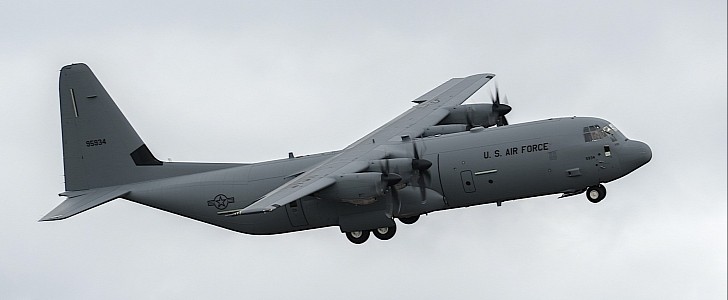Unlike fighter aircraft, which are needed in large numbers for whatever reason, transport airplanes tend to be produced in much fewer examples. This is why when a family of such beasts reaches 500 units produced, it’s a big deal for the company making them.
The C-130J Super Hercules, the most recent variant of the legendary C-130 Hercules, is the plane that recently reached said milestone. This week, its maker, Lockheed Martin, announced the delivery of the 500th unit to the 130th Airlift Wing, an incredible achievement given how, last year, around 450 of them were in operation.
At the moment, the plane is in the service of 22 countries, with America being the largest customer. It comes in no less than 17 mission variants, with the Super Hercules number 500 being a C-130J-30, described as the one for “combat delivery.”
One of the largest in the family, coming in at 112 feet (34 meters) long and with a wingspan of 132 feet (40 meters), the C-130J-30 has a maximum take-off weight of 164,000 lb (over 74 tons) and can carry a payload weighing as much as 46,700 lb (21 tons). Almost fully loaded, it can cover a distance of 2.485 miles (4,000 km).
Lockheed Martin says that, compared to the plane it is derived from, this beast can carry 30 percent more cargo, 44 percent more paratroopers, and 50 percent more Container Delivery System (CDS) bundles. It can also travel 20 percent more miles than before, while using 14 percent less fuel and needing 30 percent less crew to be kept operational.
To date, the entire fleet of C-130J Super Hercules has clocked more than 2 million hours of flight time, which is the equivalent of them spending over 228 years flying in the skies around our planet.
And they'll probably keep going for much more.
At the moment, the plane is in the service of 22 countries, with America being the largest customer. It comes in no less than 17 mission variants, with the Super Hercules number 500 being a C-130J-30, described as the one for “combat delivery.”
One of the largest in the family, coming in at 112 feet (34 meters) long and with a wingspan of 132 feet (40 meters), the C-130J-30 has a maximum take-off weight of 164,000 lb (over 74 tons) and can carry a payload weighing as much as 46,700 lb (21 tons). Almost fully loaded, it can cover a distance of 2.485 miles (4,000 km).
Lockheed Martin says that, compared to the plane it is derived from, this beast can carry 30 percent more cargo, 44 percent more paratroopers, and 50 percent more Container Delivery System (CDS) bundles. It can also travel 20 percent more miles than before, while using 14 percent less fuel and needing 30 percent less crew to be kept operational.
To date, the entire fleet of C-130J Super Hercules has clocked more than 2 million hours of flight time, which is the equivalent of them spending over 228 years flying in the skies around our planet.
And they'll probably keep going for much more.






















